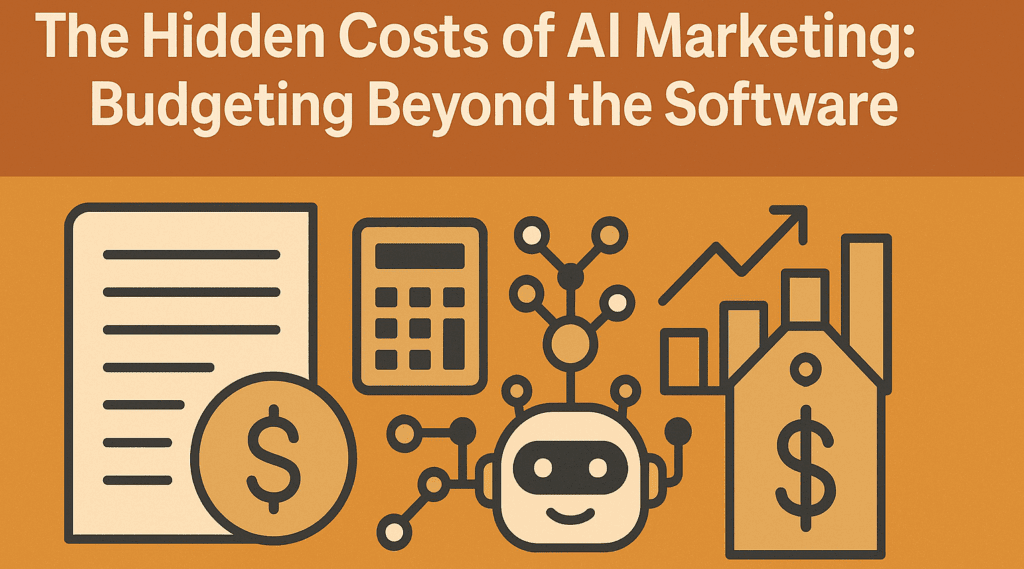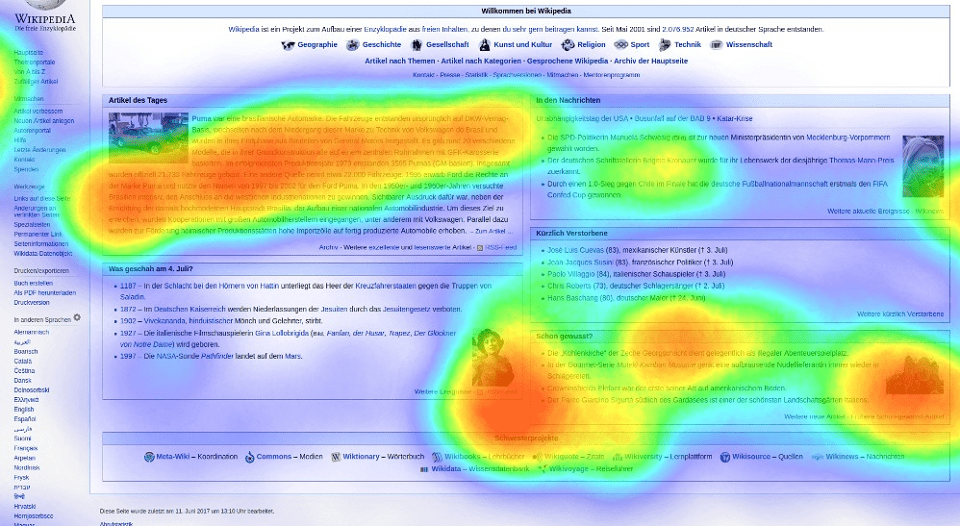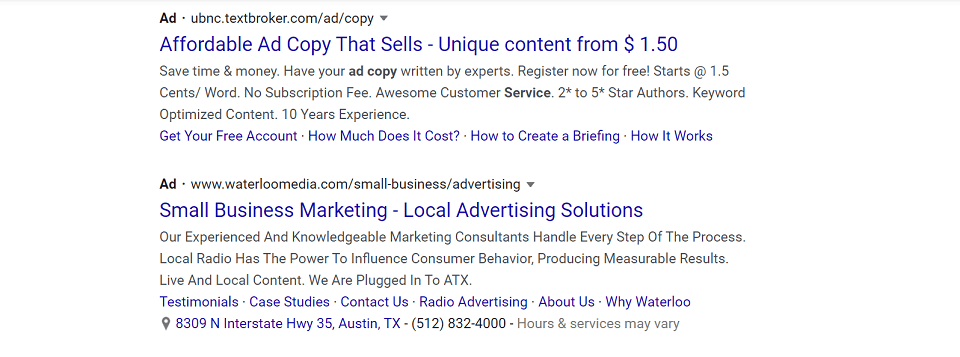AI tools promise speed, automation, and scale.
But once you get past the flashy demos and pricing pages, something becomes clear:
The software isn’t the expensive part.
If you’re leading the marketing team at a mid-sized company, your budget already feels tight.
You can’t afford to waste resources chasing false efficiencies.
This post walks through the hidden costs of AI marketing, and how to be smarter about budget decisions before you commit.
The Tool Cost Is Just the Entry Fee
Marketing teams for AI platforms position their products as plug-and-play solutions.
But behind every $99/month plan sits a stack of real costs:
- Training your team
- Integrating the tool into your current systems
- Testing and troubleshooting when things don’t work
Expect to invest 2-3x the software price in setup, rollout, and internal enablement. This is especially true during the first year.
Training Isn’t Optional (Nor is it Free)
Even the best AI tools don’t explain themselves. Internal training needs represent a soft cost you can’t overlook.
You’ll need to:
- Teach staff how to write effective prompts
- Train marketers to interpret AI outputs correctly
- Align the tool’s use with your brand voice and goals
This means:
- Extra hours of team time
- Possibly outside consultants or vendor-led training (my HAIF model can help here)
- Time spent creating internal playbooks
If you skip this step, you’ll end up with frustrated users—or worse, bad outputs going live.
Integration with Existing Systems Can Get Messy
Most mid-sized companies use a patchwork of tools: CRM, CMS, email automation, analytics dashboards.
AI tools often need to:
- Connect to your data warehouse
- Pull in content or customer info
- Feed outputs into marketing platforms
Even with APIs or plugins, there’s a cost:
- Developer time
- Workflow redesign
- QA and testing
And if your systems or data aren’t clean? That time will multiply, and quickly.
Governance and Review Slow You Down (At First)
You can’t let AI publish content unchecked.
You’ll need new review processes:
- Who signs off on AI-generated copy?
- Who checks automated ad targeting before launch?
- Who ensures AI outputs don’t cross legal or ethical lines?
Until you build trust and consistency, every AI workflow requires human oversight.
That’s time your team has to account for, no matter how smart the tool is.
Data Clean-Up Adds Hours You Didn’t Plan For
AI is only as good as the data it gets.
You may need to:
- De-duplicate customer records
- Fill in missing tags
- Fix broken data connections
You’ll find that cleaning and organizing data before feeding it to the AI is a silent budget killer.
And if your database hasn’t been audited in a while, you might see it reel out of control even worse.
Experimentation Costs Aren’t Always Obvious
The best way to find what works is to try new things.
But:
- Prompt testing burns time
- A/B testing AI-written content will increase ad spend
- Misfires can damage brand perception
Factor in budget for trial and error. It’s part of the process, but not something most vendors will tell you upfront.
The Real Investment Is in Change Management
AI in marketing isn’t just a tech shift. It’s a workflow shift. A mindset shift. A trust shift.
You’ll need to:
- Bring your team along
- Handle resistance
- Create clarity on when to use AI vs. human work
This takes leadership time, internal communication, and cross-functional support.
That’s not free. But it’s a necessity if you want to establish a sustainable level of success.
Budget for Reality, Not Just the Tool
If you’re pricing out AI for your marketing team, use this rule of thumb:
Software is 30% of the cost. The other 70% is everything it takes to make it work.
If you plan accordingly, you’ll avoid burnout, missed expectations, and waste.
Want to avoid the guesswork in your AI adoption plan?
You can buy the HAIF course now on Gumroad and get access to proven workflows, cost calculators, and a framework built specifically for mid-sized marketing teams adopting AI the right way.
Tommy Landry
Latest posts by Tommy Landry (see all)
- How to Use AI to Accelerate Content Creation Without Losing Authenticity - January 6, 2026
- B2B SEO in 2025: Winning Visibility in AI-Curated Buyer Journeys - December 16, 2025
- Local SEO Meets AEO and GEO: How AI Platforms Read Local Authority Signals - December 9, 2025





